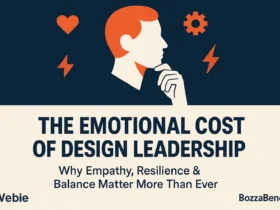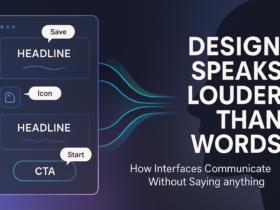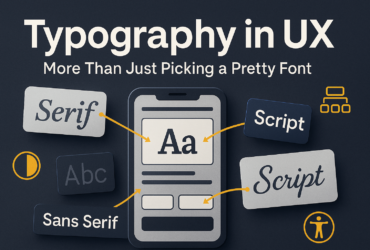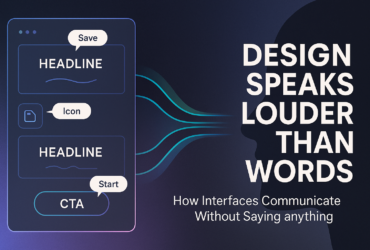Why Good UX Design Still Matters in Enterprise Software
Even in scenarios where users don’t have the freedom to choose what software they use—especially in workplaces—good UX design remains essential. Applying strong user experience principles ensures smoother workflows, higher productivity, and better satisfaction. When it comes to enterprise software usability, forcing users to interact with bad design can impact morale, efficiency, and ultimately, the bottom line. That’s exactly why UX still matters, particularly in tools employees rely on daily. Prioritizing employee-centered design is not just about aesthetics—it’s a strategic business move.
The Misconception That UX Doesn’t Matter in Enterprise Tools
Many organizations assume that because employees are required to use certain platforms, UX design becomes less relevant. This mindset results in clunky interfaces, outdated interactions, and slow adoption.
Here’s why that logic is flawed:
- Time loss adds up: Inefficient design forces users to spend more time performing simple tasks.
- Frustration leads to disengagement: Poor experiences can demotivate users, reducing overall job satisfaction.
- Training costs increase: Complex or non-intuitive interfaces require more onboarding and support.
In the enterprise world, efficiency is everything. Neglecting good UX design can become an expensive oversight.

Why UX Still Matters—Even in Mandatory Software
The concept of why UX still matters becomes even more relevant when users are “captive”—meaning they don’t have a choice. Just because people are required to use a system doesn’t mean they should suffer through it.
When systems are designed poorly, organizations may face:
- Higher error rates
- Increased support tickets
- Loss of productivity
By contrast, integrating user experience principles into internal platforms:
- Reduces the learning curve
- Encourages consistency in task execution
- Enhances employee satisfaction and retention
In short, even enterprise software deserves employee-centered design—because happy users are productive users.
Key Elements of Good UX Design for Internal Tools
To improve enterprise software usability, design teams should focus on:
1. Clarity and Simplicity
Interfaces should be intuitive, with clear navigation, labels, and feedback. Avoid technical jargon unless absolutely necessary.
2. Consistency Across Modules
From menus to forms, keeping patterns uniform helps users build familiarity and confidence.
3. Accessibility and Inclusivity
Tools should work for all employees, including those with disabilities. This expands access and compliance with legal standards.
4. Responsive Feedback
When actions are performed—like submitting a form or triggering a workflow—the system should confirm it clearly and quickly.
These aren’t just checkboxes for designers—they’re foundations of user experience principles that boost real-world performance.

Investing in UX Improves Business Outcomes
Companies that prioritize employee-centered design see tangible benefits beyond just usability. According to multiple studies, businesses with strong UX practices:
- Save costs through reduced rework and support
- Increase efficiency by streamlining tasks
- Experience better software adoption across departments
Think of good UX design not as a “nice-to-have” but as a business accelerator. And the impact grows exponentially when applied to widely used platforms like CRMs, ERPs, and HR systems.
Want to see how a strategic UX approach impacts your business? Explore tailored solutions at Webie and stay informed with insights from Bozza Bench.
Common UX Mistakes in Enterprise Applications
Some of the most frequent pitfalls include:
- Overloading users with too much information on a single screen
- Using inconsistent icons and terminology
- Hiding key actions in hard-to-find menus
- Designing without user feedback
Addressing these issues not only improves enterprise software usability but also strengthens internal trust and collaboration.
For example, if layout shifts and visual stability aren’t handled properly, it can seriously degrade user trust. Learn why visual consistency is critical in our UX deep-dive on Cumulative Layout Shift.
How to Advocate for UX in Corporate Environments
If you’re working in-house or with a client who downplays design, it can be challenging to prioritize UX. Here’s how to make a strong case:
- Use metrics: Show how improved UX reduces support tickets or increases task speed.
- Gather testimonials: Let internal users voice their struggles and ideas.
- Run small experiments: A/B test interface changes to demonstrate clear impact.
- Present UX as risk management: Poor design can lead to critical mistakes, especially in finance or healthcare.
When you frame good UX design as a cost-saving and performance-enhancing investment, leadership becomes more receptive.

Final Thoughts
Good UX design isn’t just for customers—it’s essential for internal users too. In environments where software usage is mandatory, focusing on employee-centered design ensures smoother operations and better engagement. Applying strong user experience principles to enterprise systems isn’t just beneficial—it’s critical.
Don’t wait for frustration to pile up. Prioritize enterprise software usability from day one and build systems that empower your workforce. After all, the question isn’t why UX still matters, but why it ever stopped being a priority.



























Leave a Reply